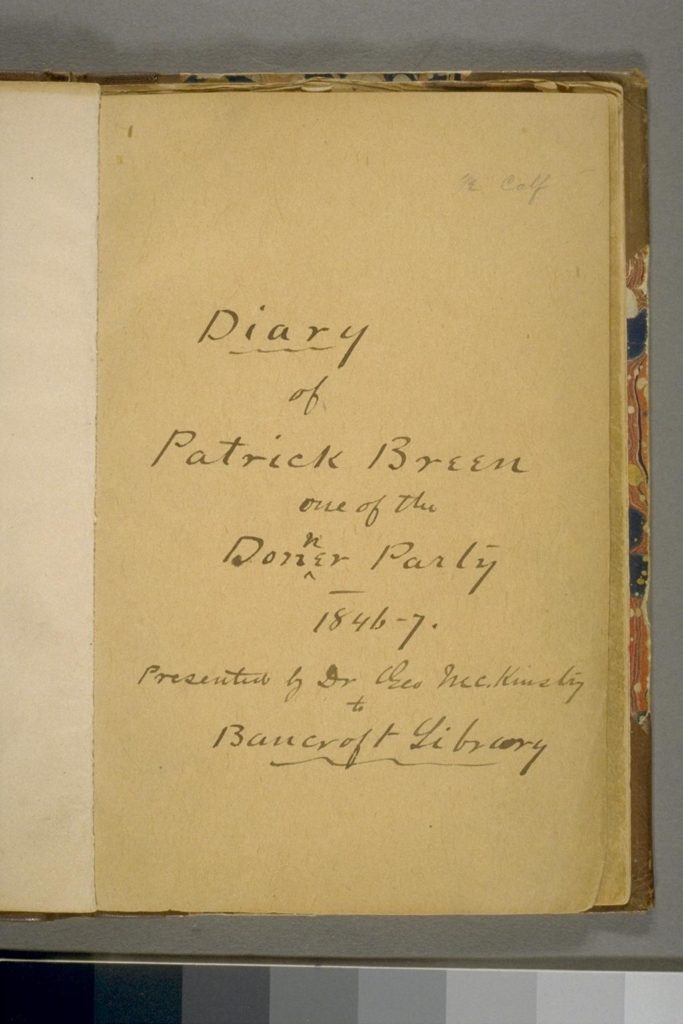by Sonia Kahn from the Bancroft Digital Collections Unit.
“We pray the God of mercy to deliver us from our present Calamity if it be his Holy will,” wrote Patrick Breen on New Year’s Day 1847. In the midst of a snow storm, with provisions running short and several members of his party already dead from starvation, Calamity was not an overstatement.
Breen was a member of the now infamous Donner Party. An Irish immigrant, he had set out with his wife and seven children to make their way westward from Illinois to the California sunshine. The Breens composed just one family in the group of 87 people to make the trek led by George Donner and James Reed. Only 48 would survive the ordeal.

Calamity struck the Donner Party while in the Sierra Nevadas. Stuck in the first blizzard of the season, the party was unable to continue the journey. The blizzard, unfortunately, was not a quick setback but the harbinger of a terrible winter to come.
Patrick Breen began recording in his diary on November 20, 1846. “It continueing [SIC] to snow all the time we were here we now have killed most part of our cattle having to stay here untill [SIC] next spring & live on poor beef without bread or salt,” wrote Breen. “Poor beef” would hardly seem such a terrible meal when a few weeks later the party had resorted to eating animal hides. The situation deteriorated even further, and as members of the party perished, Breen described how other members thought about, or claimed to have engaged in, cannibalism. When one woman mentioned that she was considering consuming a dead comrade out of desperation, Breen quite simply wrote “It is distressing.” Such bare simplicity perfectly describes the feeling one is faced with in reading the trials of the Donner Party.
On February 19, 1847 the first rescue party arrived bringing a few provisions. The relief team of men from California took with them 21 members of the party, but the Breen family was left behind. 170 years ago today, on March 1, 1847, Breen made the last entry in his diary which recounts the arrival of the second relief team. This second rescue team guided 14 people, including the Breen family, to safety in Sutter’s Fort, California. A third relief team later rescued all the remaining children of the Donner Party but was forced to leave behind five stragglers. By the time the fourth team arrived, only one man was still alive.
The history of the Donner Party and the epics detailed in Breen’s diary are a reminder of the lengths to which people once went to reach this golden state, and the sunny days we often take for granted.
The Bancroft Library maintains the original Breen diary and has digitized the journal.
View the collection: Patrick Breen Diary (BANC MSS C-E 176)